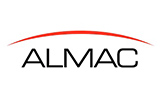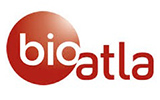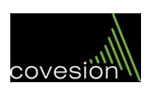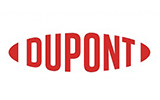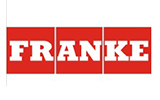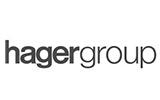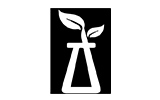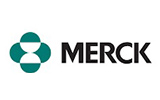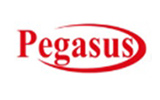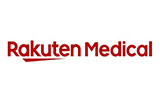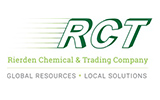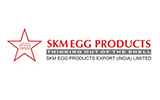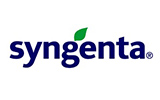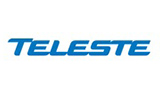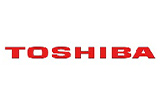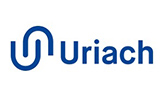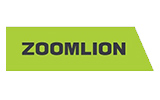CHAPTER 1: INTRODUCTION
1.1. Report description
1.2. Key benefits for stakeholders
1.3. Key market segments
1.4. Research methodology
1.4.1. Primary research
1.4.2. Secondary research
1.4.3. Analyst tools and models
CHAPTER 2: EXECUTIVE SUMMARY
2.1. Key finding of the study
2.2. CXO perspective
CHAPTER 3: MARKET OVERVIEW
3.1. Market definition and scope
3.2. Key findings
3.2.1. Top investment pocket
3.2.2. Top winning strategies
3.2.3. Top winning strategies, by year, 2015-2017
3.2.4. Top winning strategies, by development, 2015-2017 (%)
3.2.5. Top winning strategies, by company, 2015-2017
3.3. Porter's five forces analysis
3.3.1. Bargaining power of suppliers
3.3.2. Bargaining power of buyer
3.3.3. Thereat of new entrants
3.3.4. Threat of substitute
3.3.5. Intensity of competitive rivalry
3.4. Market dynamics
3.4.1. Drivers
3.4.1.1. Growing demand for specialty paper
3.4.1.2. Increasing use of functional chemicals
3.4.1.3. Recycling in paper industry
3.4.2. Restraints
3.4.2.1. Stringent regulations on specialty chemicals
3.4.2.2. Volatility in the price of raw materials
3.4.3. Opportunities
3.4.3.1. Use of specialty pulp and paper chemicals for energy conservation.
3.4.3.2. Use of next generation enzymes for paper manufacturing
3.5. Top player positioning
CHAPTER 4: SPECIALTY PULP AND PAPER CHEMICALS MARKET, BY TYPE
4.1. Overview
4.1.1. Market size and forecast
4.2. Bleaching & RCF Chemicals
4.2.1. Key market trends, growth factors, and opportunities
4.2.2. Market size and forecast
4.2.3. Market analysis by country
4.3. Process Chemicals
4.3.1. Key market trends, growth factors, and opportunities
4.3.2. Market size and forecast
4.3.3. Market analysis by country
4.4. Functional Chemicals
4.4.1. Key market trends, growth factors, and opportunities
4.4.2. Market size and forecast
4.4.3. Market analysis by country
4.5. Coating Chemicals
4.5.1. Key market trends, growth factors, and opportunities
4.5.2. Market size and forecast
4.5.3. Market analysis by country
4.6. Pigments & Fillers
4.6.1. Key market trends, growth factors, and opportunities
4.6.2. Market size and forecast
4.6.3. Market analysis by country
CHAPTER 5: SPECIALTY PULP AND PAPER CHEMICALS MARKET, BY GEOGRAPHY
5.1. Overview
5.1.1. Market size and forecast
5.2. North America
5.2.1. Key market trends, growth factors, and opportunities
5.2.2. Market size and forecast, by type
5.2.3. Market size and forecast, by country
5.2.4. U.S.
5.2.4.1. Market size and forecast, by type
5.2.5. Canada
5.2.5.1. Market size and forecast, by type
5.2.6. Mexico
5.2.6.1. Market size and forecast, by type
5.3. Europe
5.3.1. Key market trends, growth factors, and opportunities
5.3.2. Market size and forecast, by type
5.3.3. Market size and forecast, by country
5.3.4. U.K.
5.3.4.1. Market size and forecast, by type
5.3.5. Germany
5.3.5.1. Market size and forecast, by type
5.3.6. France
5.3.6.1. Market size and forecast, by type
5.3.7. Italy
5.3.7.1. Market size and forecast, by type
5.3.8. Spain
5.3.8.1. Market size and forecast, by type
5.3.9. Russia
5.3.9.1. Market size and forecast, by type
5.3.10. Rest of Europe
5.3.10.1. Market size and forecast, by type
5.4. Asia-Pacific
5.4.1. Key market trends, growth factors, and opportunities
5.4.2. Market size and forecast, by type
5.4.3. Market size and forecast, by country
5.4.4. China
5.4.4.1. Market size and forecast, by type
5.4.5. India
5.4.5.1. Market size and forecast, by type
5.4.6. Japan
5.4.6.1. Market size and forecast, by type
5.4.7. Rest of Asia
5.4.7.1. Market size and forecast, by type
5.5. LAMEA
5.5.1. Key market trends, growth factors, and opportunities
5.5.2. Market size and forecast, by type
5.5.3. Market size and forecast, by country
5.5.4. Brazil
5.5.4.1. Market size and forecast, by type
5.5.5. Saudi Arabia
5.5.5.1. Market size and forecast, by type
5.5.6. South Africa
5.5.6.1. Market size and forecast, by type
5.5.7. Turkey
5.5.7.1. Market size and forecast, by type
5.5.8. Rest of LAMEA
5.5.8.1. Market size and forecast, by type
CHAPTER 6: COMPANY PROFILES
6.1. AkzoNobel N.V.
6.1.1. Company overview
6.1.2. Company snapshot
6.1.3. Product portfolio
6.1.4. Key strategic moves and developments
6.2. Ashland Inc.
6.2.1. Company overview
6.2.2. Company snapshot
6.2.3. Product portfolio
6.3. BASF SE
6.3.1. Company overview
6.3.2. Company snapshot
6.3.3. Operating business segments
6.3.4. Product portfolio
6.3.5. Business performance
6.4. Buckman Laboratories International, Inc.
6.4.1. Company overview
6.4.2. Company snapshot
6.4.3. Product portfolio
6.4.4. Key strategic moves and developments
6.5. Evonik Industries AG
6.5.1. Company overview
6.5.2. Company snapshot
6.5.3. Product portfolio
6.6. Kemira Oyj
6.6.1. Company overview
6.6.2. Company snapshot
6.6.3. Operating business segments
6.6.4. Product portfolio
6.6.5. Business performance
6.6. Nalco Holding Company
6.6.1. Company overview
6.6.2. Company snapshot
6.6.3. Operating business segments
6.6.4. Product portfolio
6.6.5. Business performance
6.6.6. Key strategic moves and developments
6.8. Shell Chemicals
6.8.1. Company overview
6.8.2. Company snapshot
6.8.3. Product portfolio
6.8.4. Key strategic moves and developments
6.9. SNF Floerger
6.9.1. Company overview
6.9.2. Company snapshot
6.9.3. Operating business segments
6.9.4. Product portfolio
6.9.5. Key strategic moves and developments
6.10. The Dow Chemical Company
6.10.1. Company overview
6.10.2. Company snapshot
6.10.3. Product portfolio


